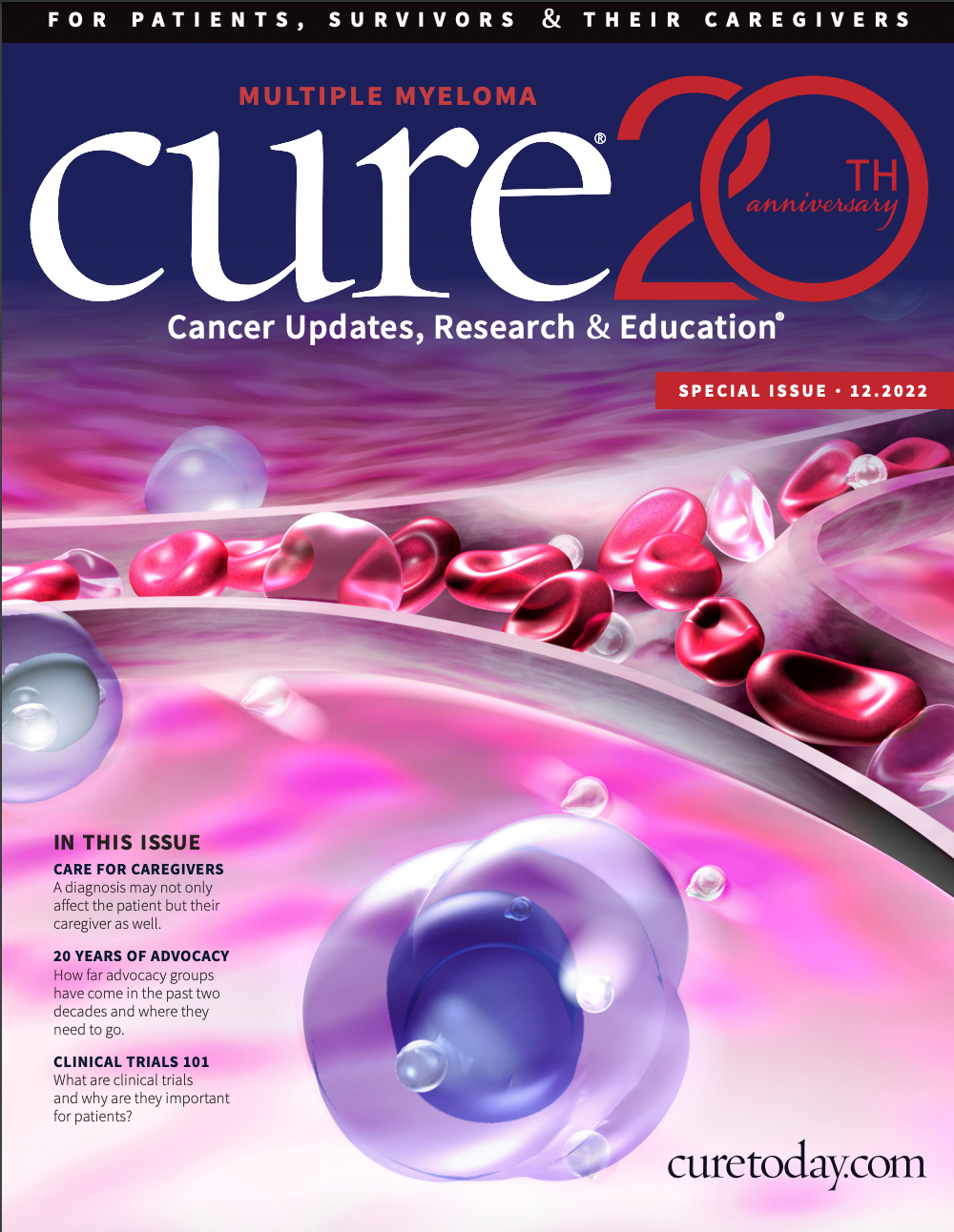Publication
Article
CURE
Myeloma Advancements Are a Work in Progress
Author(s):
The past 20 years have brought great advances to advocacy groups, helping to improve patients’ quality of life. But more work is needed to raise awareness in underserved groups.
As treatments continue to advance in the multiple myeloma space and patients are living longer, it is important that they have resources and support around them — something that was lacking 20 years ago.
Karen DeMairo has been at The Leukemia & Lymphoa Society for 23 years and has witnessed firsthand the advancements of many myeloma support groups. DeMairo, who is the vice president of education, support and integration at the organization, said when she started, she didn’t fully understand what multiple myeloma was — just as many people didn’t.
“I don’t think a lot of people really knew what myeloma was (20 years ago),” she said in an interview with CURE®. “People are still learning what it is, so I don’t think there was as much emphasis on providing support as (there is) now.”
What Was Missing?
Twenty years ago, there was a lack of awareness around multiple myeloma, so it was a struggle for those patients to find support, DeMairo explained.
“And ... if you don’t know about it, how can you provide support?” she explained. “And then the support that may have been available, people weren’t looking for it, which I think has now changed.”
Jennifer Flowers, a community outreach volunteer at The Leukemia and Lymphoma Society, who is currently in remission from multiple myeloma, agreed and noted it probably wasn’t as easy for those patients to find support like she did.
“Finding support for patients with multiple myeloma 20 years ago was very different than what it is today,” she said in an interview with CURE®. “I’d imagine back then it was quite different than it is now because there are so many options and tools that are available to accommodate one’s personal needs during their journey.”
Furthermore, education was lacking, so support was hard to come by for patients with multiple myeloma. There was also a limited number of support groups for these patients to join. But today, as treatments for the space have advanced, so have the support groups and resources for patients.
What Was Found?
Flowers is one such patient who has benefited from the advances of support groups. She received her diagnosis in 2008 without knowing what multiple myeloma even was, let alone the treatment, side effects and effect on quality of life it would entail. An aspect she found comforting when joining the organization during her cancer journey was hearing from others and gaining a better understanding of what to expect.
“Patients like me benefit from support groups by connecting with peers who have traveled their journey and openly share their experience,” she explained. “It’s very helpful and important. Once (you’re) enlightened about the journey you’re embarking on, you don’t feel so blindsided.”
Support groups can also provide patients with educational resources, financial advice, side effect support and much more, which ultimately led to an improved quality of life for Flowers.
“Advances in support groups are important for me because they elevated my awareness about the disease and tools available to aid and receive the best care and support to live a quality life,” she said.
DeMairo agreed and added that as treatments continue to advance, so will the resources, education and support that are available for patients.
“It’s important for (a patient’s) health that they know these treatments are available,” she noted. “We’re seeing more and more progress in treating patients with multiple myeloma. And it’s important that as they survive the treatments and the disease, we help provide those resources to improve their quality of life.”
What Still Needs Work?
Both DeMairo and Flowers noted that although awareness around the disease is greater than it was two decades ago, more is needed — specifically in minority and underserved communities.
“(Although) we continue to work toward educating others about the disease, there is an inconsistent lack of knowledge about the disease being spread in different communi- ties (because of) our social economic background in the area we live in,” Flowers said.
Of note, Black Americans are twice as likely to receive a multiple myeloma diagnosis as individuals of another race. “We are not equipped with information to provide support and the best possible tools and care we need to navigate the process,” she said. DeMairo explained that The Leukemia and Lymphoma Society has been doing its part to help combat the disparities in multiple myeloma care with their program, Myeloma Link. The goal is to increase access to education on and treatments of multiple myeloma to empower Black patients with multiple myeloma, caregivers, survivors and family members.
“In terms of support, we, as an organizaion, must try to reach communities that are most at risk,” DeMairo noted. “And people in general, to make them more aware of the disease and the resources available to them.”
Although there is more work to be done, what has been done so far has benefited many, including Flowers. She said joining a support group gave her a sense of hope, and she feels grateful to be helping those who are now in a position she once was in.
“For me, to make a difference, you have to be the difference,” she concluded. “With that, you give (patients) hope and help in providing the necessary steps they need to take so they can get the best quality care they possibly can.”
For more news on cancer updates, research and education, don’t forget to subscribe to CURE®’s newsletters here.




